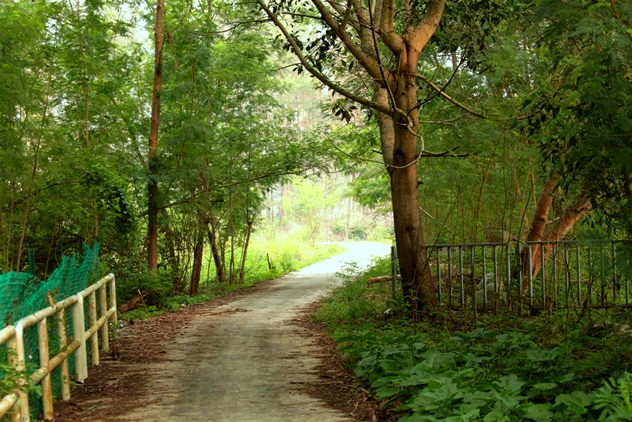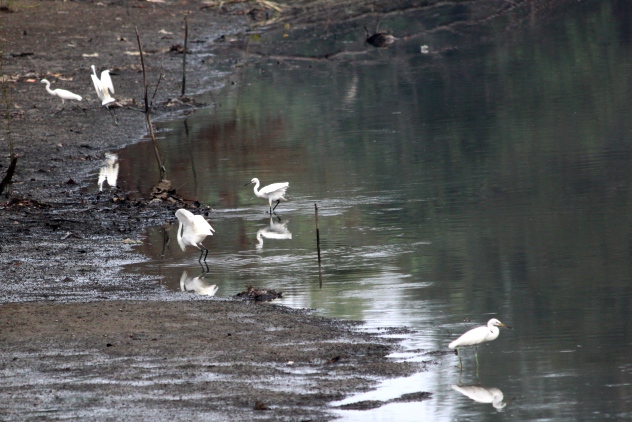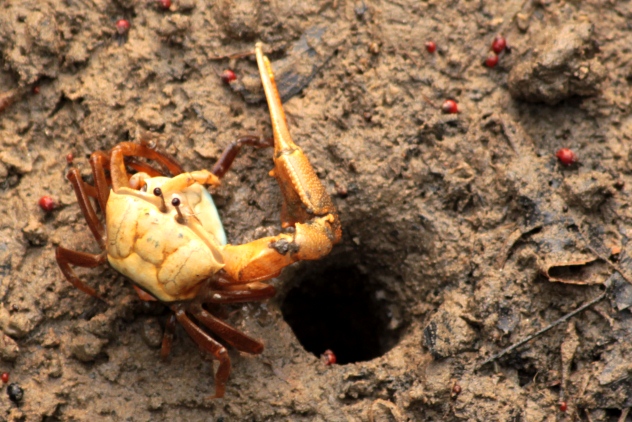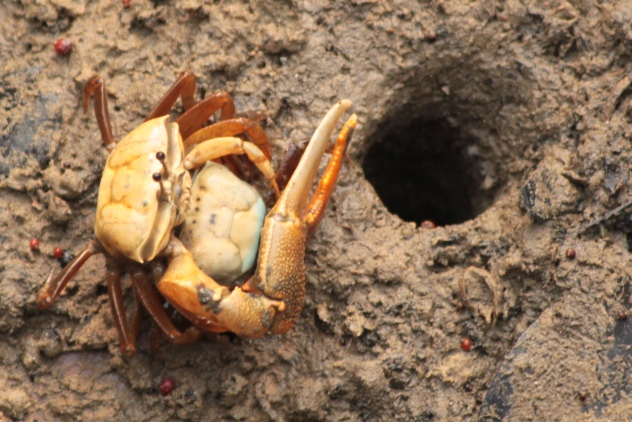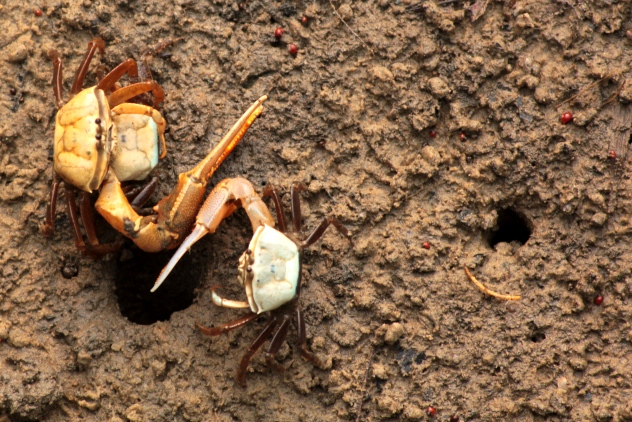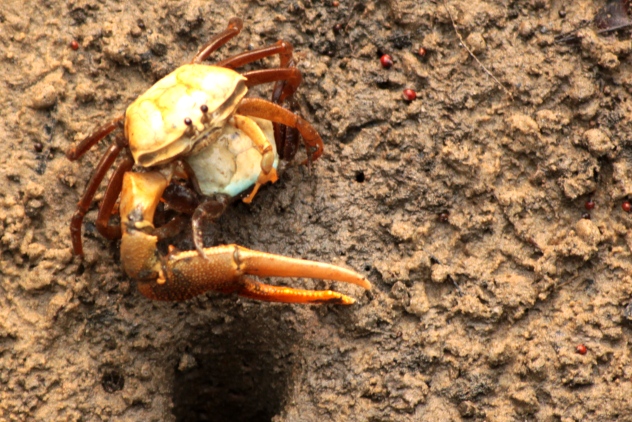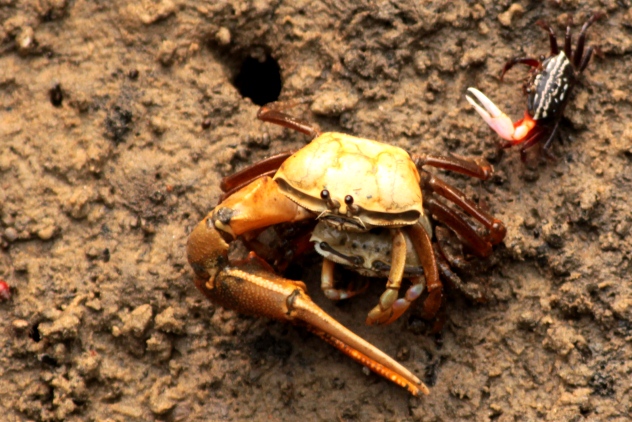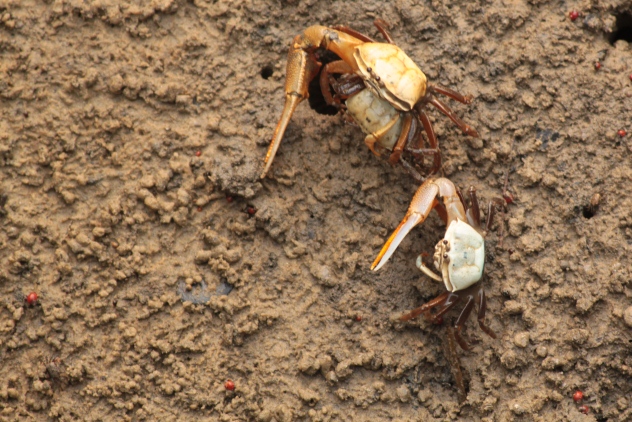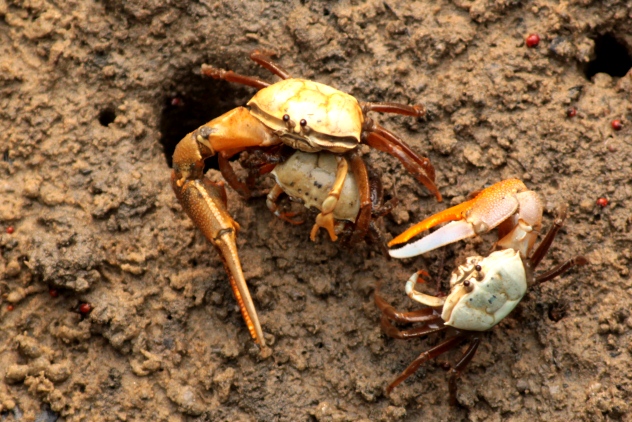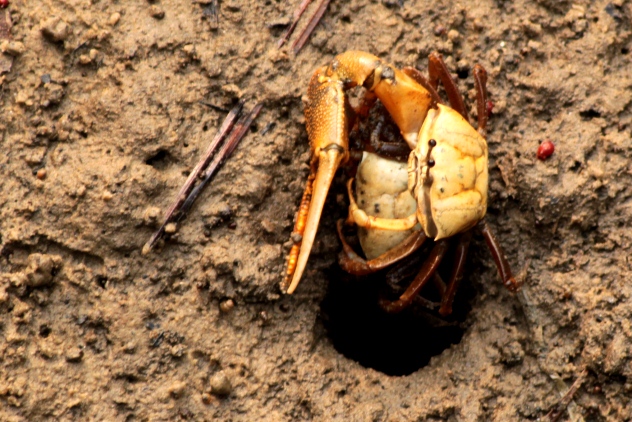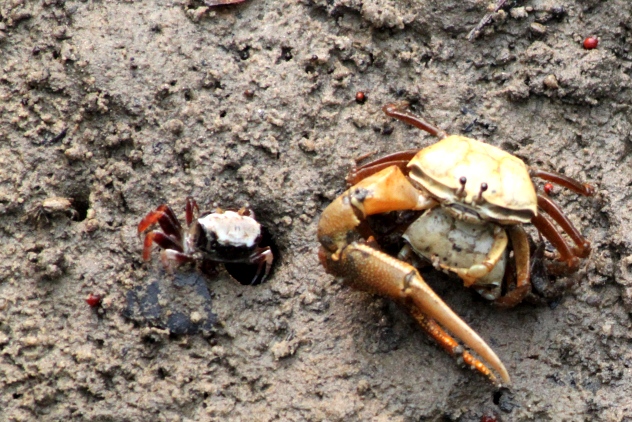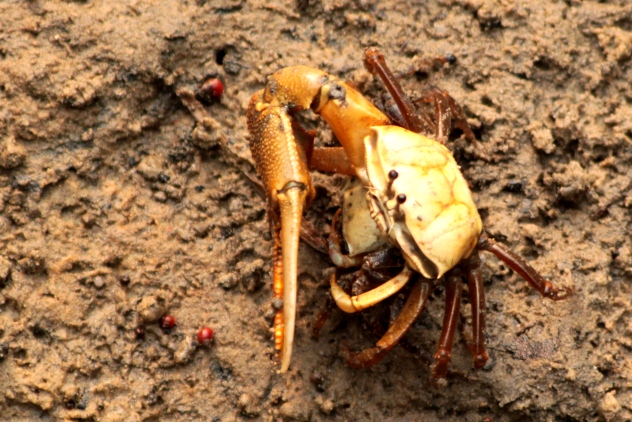I have discovered a new spot that is great for photography. It is the park behind Parkcity Everly Hotel. On the left side of the hotel, there is a concrete pathway that runs all the way to the beach area. As you stroll along this pathway, you will see a small stream on the left side. If you are lucky, you will encounter birds on the banks of the stream.
Since yesterday, I have been to this park four times, twice yesterday and twice today, spending a total of more than eight hours photographing birds, butterflies, dragon flies, bees, flowers, leaves, creeper plants, dead leaves, dead plants, foliage, grass, tree barks, squirrels, and crabs. Oh gosh! I have never seen so many crabs in my life!
After I posted my article about hornbill mating yesterday, my brother Chin Tian commented “What’s next?” To that, I now have the answer.
This morning, while photographing the crabs, I saw a male edging closer to a female and wrapping his claws and legs around the female like an embrace. The crabs adopted the missionary position in their mating, with the female beneath the male.
The male cradled the female underneath him with his legs and remained in this position (which is often called a doubler) for the whole half-hour duration when I was watching them. A few males tried to interfere but were sort of chased off by the first male. I suspect the first male was probably indicating to the other males that the female is his so buzz off!
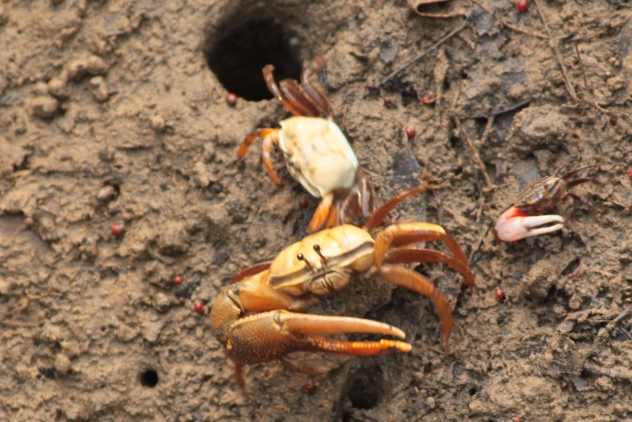
The male has expressed great interest in this female crab…it has been getting close to her on several attempts with the female moving quickly away on each occasion.
A female is ready to mate when she is in the molting stage, which is the only time when her shell will be soft enough for mating.
The male and female will engage in a premating embrace, where the male will wrap his claws and legs around the female in a sort of embrace. In some species, the female will go into this position willingly; in others, the male must prove himself through the hug. Once the female is convinced that the male is strong enough, she’ll stop struggling and go along with the male.
The embrace can last several days, after which point the female will molt and the pair will mate. The male transfers sperm by inserting his gonopods (sexual organs resembling antennae) into the two genital pores, called gonophores, on the female’s underside. The female stores the sperm in a storage sac called a spermatheca until she is ready to use it.
Once copulation is complete, the male will guard the female for a few days (giving her shell time to harden) before taking off in search of a new mate. That sounds like a Casanova!
 CY@CY Says Welcome to my dreamscape. Where a Lim is also a Ling.
CY@CY Says Welcome to my dreamscape. Where a Lim is also a Ling.
